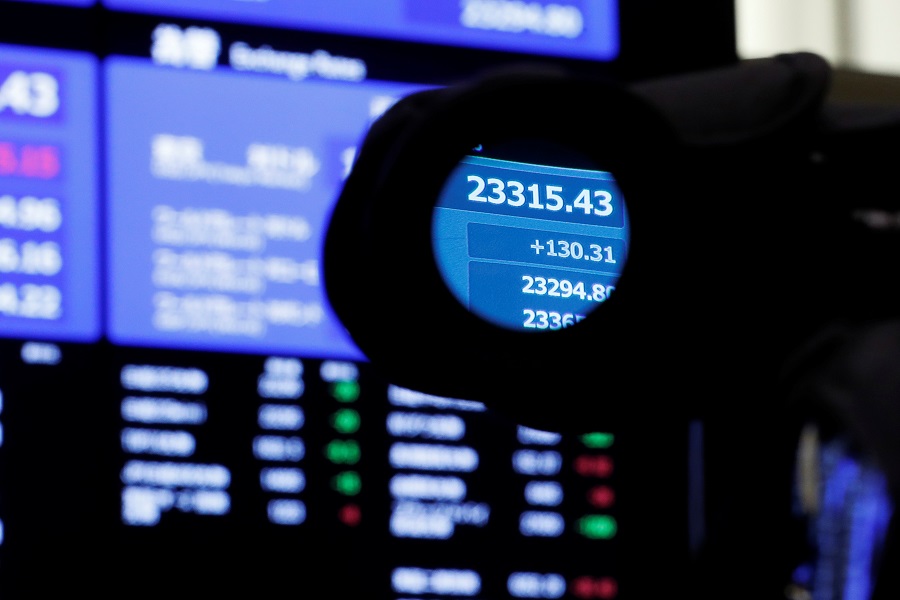Asian shares meander as US inflation test awaits; kiwi slides

Asian stocks were tentative on Wednesday ahead of a U.S. inflation reading this week that could influence the timing of the Federal Reserve's easing cycle, while the New Zealand dollar fell sharply after the central bank softened its hawkish stance on rates.
New Zealand's central bank held the cash rate steady at 5.5% on Wednesday, reiterating that previous rate hikes had helped dampen prices, but adding that the risk of further rate hikes had been reduced. The kiwi was last at $0.61235, down 0.75% on the day.
"The RBNZ has closed the door to further rate hikes, which was a surprise to somewhat hawkish expectations," said Charu Chanana, head of currency strategy at Saxo.
"This may give room for NZD longs to unwind in the short term, but NZD still provides a strong carry in this low volatility environment."
The yen remained bolted to psychologically key 150 per dollar level and was last at 150.43 per dollar. The Nikkei was 0.2% lower on the day, having touched fresh record peaks this week.
MSCI's broadest index of Asia-Pacific shares outside Japan was 0.11% lower at 527.14 points but hovering around a near seven-month peak of 531.56.
China stocks were mixed in early trading, with Hong Kong' Hang Seng index down 0.31% and China's blue-chip index CSI300 up 0.46%.
Investor focus is squarely on the personal consumption expenditures price index (PCE) for January, the Fed's preferred inflation measure, due on Thursday. The PCE is expected to have risen 0.3% on a monthly basis in January, up slightly from the 0.2% increase seen in December, a Reuters poll showed.
A slew of strong economic data along with inflation that has proven to be sticky has resulted in traders drastically dialling back their initial expectations of deep and early interest rate cuts from the Fed.
Markets now anticipate June to be the starting point of the easing cycle compared with March at the start of the year. Traders now expect 77 basis points of cuts this year versus pricing in 150 bps of easing at the start of the year.
Yuting Shao, macro strategist at State Street Global Markets, said individual data releases carry weight for a data-dependent Fed and will impact risk sentiment given the near-neutral positioning from investors.
"Although one data point does not make a trend, latest inflation and employment readings have raised the prospect that perhaps no landing scenario is driving many asset markets."
Other data due this week which could help shape expectations from the Fed include the second estimate of gross domestic product, jobless claims and manufacturing activity.
Fed policymakers have also in recent days pushed back against cutting rates too early, with Federal Reserve Governor Michelle Bowman on Tuesday saying she was in no rush to cut U.S. interest rates, particularly given upside risks to inflation that could stall progress or even cause a resurgence of price pressures.
Meanwhile, the Australian dollar wobbled a bit in early trading after data showed consumer price inflation held at a two-year low in January, reinforcing market expectations interest rates would not need to increase any further. The Aussie was 0.11% lower at $0.6537.
The dollar index, which measures the U.S. currency against six rivals, rose 0.01%.
U.S. crude fell 0.41% to $78.55 per barrel and Brent was at $83.31, down 0.41% on the day, as the prospect of a delayed U.S. rate cutting cycle offset the boost provided by talk of extensions to production cuts from OPEC+. [O/R]
Spot gold rose 0.1% to $2,030.83 an ounce.
























